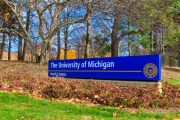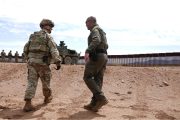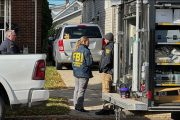Gun-free zones are invitations to mass murder, gun-rights advocates argued after a lone gunman’s shooting rampage at the Sandy Hook elementary school in Newtown, Connecticut, Friday left 20 children and six adults dead. John Lott, author of the controversial 1999 bestseller More Guns, Less Crime, said in an interview with Newsmax.com Saturday it is no coincidence that mass shootings with multiple victims occur repeatedly in designated gun-free zones such as schools, shopping malls, and movie theaters.
“The problem is, whether it is the Portland [Oregon] shooting earlier this week, or the Connecticut shooting Friday, or the Sikh temple attack in Wisconsin, time after time these attacks take place in the few areas within a state where permit-concealed handguns are banned,” Lott said. “It’s not just this year, it’s all these years in the past. And at some point people have to recognize that despite the obvious desire to make places safe by banning guns, it unintentionally has the opposite effect.”
The effect, said Lott, is to encourage a killer to believe it will be easier to commit the mayhem he has in mind in an environment where no one will be able to shoot back.
“If you had a violent criminal stalking you or your family, and was really seriously threatening you, would you feel safer putting a sign up in front of your home stating, ‘This home is a gun-free zone?'” Lott asked. “My guess is you wouldn’t do that. And I’ve never run into any gun-control proponents who would do that either. And the reason is pretty clear: Putting a sign there saying this is a gun-free home isn’t going to cause the criminals to say, ‘Oh, I don’t want to break the law, so I’m not going to go in and attack these people.’ It encourages them to do it. It serves as a magnet for him, if he’s going to engage in this attack, that that’s the place where he is going to engage in, because he finds that it is going to be easier to do it there. Yet every time we have one of these mass shooting incidents, it renews the call from the media and the left for banning guns.”
Lott recalled this summer’s shooting at a movie theater in Aurora, Colorado, where 12 people were killed and 58 wounded when a killer opened fire with semi-automatic weapons.
There, you have seven movie theaters that were showing the Batman movie when it opened at the end of July. Out of those seven movie theaters, only one movie theater was posted as banning permit-concealed handguns. The killer didn’t go to the movie theater that was closest to his home. He didn’t go to the movie theater that was the largest movie theater in Colorado, which was essentially the same distance from his apartment as the one he ended up going to. Instead, the one he picked was the only one of those movie theaters that banned people taking permit-concealed handguns into that theater.
The 1999 killings at Columbine High School in Littleton, Colorado, and a number of school shootings since have prompted school boards and administrators across the country to resort to security locks, surveillance cameras, and emergency lockdown drills to prevent similar horrors from happening at their schools. None of that prevented the carnage at the Newtown school Friday, where alleged killer Adam Lanza reportedly shot his way through a school window to break into the building. In the path of a determined killer, a safe retreat to a secure hiding place is often impossible, Lott said.
“Simply telling them to behave passively turns out to be pretty bad advice,” he told Newsmax. “By far the safest course of action for people to take when they are confronting a criminal is to have a gun. This is particularly true for the people in our society who are the most vulnerable.”
While some have called for arming teachers and principals, former Secretary of Education William Bennett suggested on NBC’s Meet the Press Sunday that one armed, trained person in each school might be enough to prevent the kind of massacre that occurred in Connecticut on Friday. Appearing on the same panel, Randi Weingarten, president of the American Federation of Teachers, quickly disagreed.
“We need to stop this routine view that having more guns will make us safer,” she said. The AFT is calling on Michigan Governor Rick Snyder to veto a bill, passed by the state’s legislature one day before the Connecticut shooting, that would allow the carrying of concealed weapons in schools. The bill passed over the opposition of the state’s school boards, the New York Times reported.
Gun bans at public colleges and universities have been a hotly debated issue since a Virginia Tech student in 2007 killed 32 and wounded 17 people in a shooting spree that finally ended when, as happened Friday in Newtown, the gunman took his own life. That massacre, still the deadliest school shooting ever, led to arguments by gun-control opponents that the university’s gun-free “safe zone” ensured that no one else on the campus would be armed and able to stop the killer.
A lawsuit filed the following year on behalf of two students and an alumnus at the University of Colorado led to a state Supreme Court decision in March of this year overturning the school’s 40-year-old ban on guns. The court ruled the ban violated a Colorado law, passed in 2003, that permits the carrying of concealed weapons. Karen Jacobs, who teaches English at the university, told the New York Times in September that knowing students may be armed could have a chilling effect on campus debate.
“This is a place where we depend on being able to speak our minds and offer sometimes controversial opinions in a free and open place,” Jacobs said. “The feeling among a percentage of faculty is that this will create a climate of fear and intimidation.”
In an opinion piece published Friday on the USA Today website, University of Tennessee law professor Glenn Harlan Reynolds argued that the climate is more than fearful, it is deadly when people are denied the means to defend themselves and others against an armed attack.
“If there’s someone present with a gun when a mass shooting begins, the shooter is likely to be shot himself,” Reynolds wrote. “And, in fact, many mass shootings — from the high school shooting by Luke Woodham in Pearl, Miss., to the New Life Church shooting in Colorado Springs, Colo., where an armed volunteer shot the attacker — have been terminated when someone retrieved a gun from a car or elsewhere and confronted the shooter.”
Reynolds said a number of his students have permits to carry guns but are barred from bringing them onto the university’s gun-free campus. After the Virginia Tech shooting, he recalled, a student asked if the class could be taught off-campus because she felt unsafe being unarmed.
“Given that gun-free zones seem to be a magnet for mass shooters, maybe we should be working to shrink or eliminate them, rather than expand them,” Reynolds wrote. “As they say, if it saves just one life, it’s worth it.”
Related articles:
Gunman Forced Way Into School, Shot 26 Victims Multiple Times
China School Knife Attack, Portland Mall Attack Receive Little Coverage




